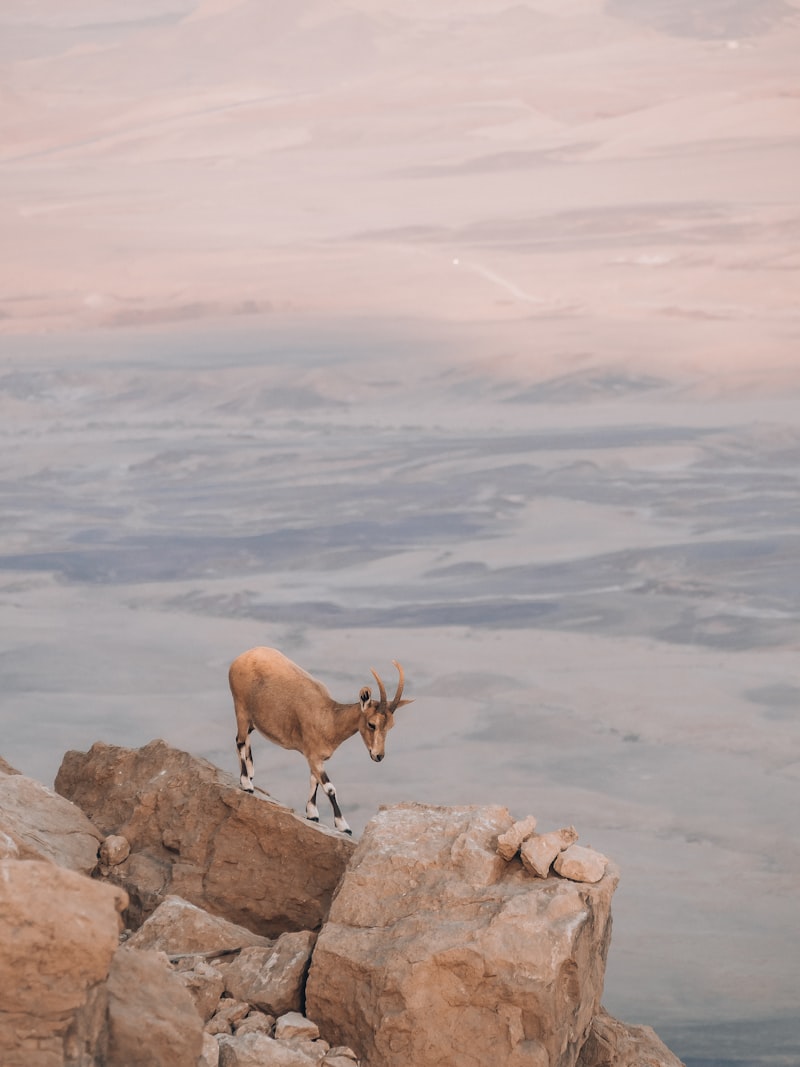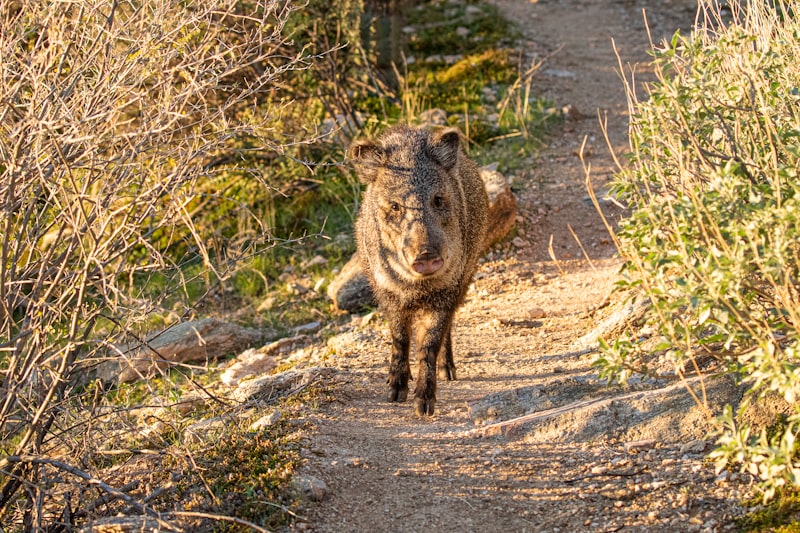Deserts, with their scorching heat and sparse vegetation, are among the harshest environments on Earth. Yet, within these arid landscapes, a fascinating array of creatures has evolved remarkable survival strategies. From the resilient camel to the elusive fennec fox, each animal has adapted uniquely to thrive in these challenging conditions.
Camels, often called the “ships of the desert,” are renowned for their ability to survive without water for extended periods. Their humps store fat, not water as commonly believed, providing energy reserves crucial for enduring long journeys across the barren terrain. This adaptation allows them to regulate their body temperature efficiently, minimizing water loss through sweating even in extreme heat.
In contrast, the fennec fox embodies agility and stealth. With oversized ears that dissipate heat and keen senses, it hunts small rodents and insects under the cover of night when temperatures are cooler. Its pale coat reflects sunlight, acting as natural camouflage against the desert sands, enabling it to evade predators and prey alike.

Another marvel of desert adaptation is the sidewinder rattlesnake. Found in the southwestern United States and northern Mexico, this snake moves in a distinctive sidewinding motion, minimizing contact with scorching hot sand. Its scales are uniquely adapted to blend with its surroundings, providing both protection and effective camouflage while hunting small mammals and birds.
Furthermore, the dung beetle exemplifies resourcefulness in the desert. Thriving in nutrient-poor environments, these beetles scavenge dung for sustenance and reproduction. They roll dung into balls and bury them beneath the sand, where they serve as both a food source and a shelter from the intense desert heat.
Survival in the desert is not merely about enduring harsh conditions but thriving despite them. Each of these creatures showcases remarkable adaptations that allow them not only to survive but to thrive in one of the world’s most challenging ecosystems. Their strategies, whether through efficient water conservation, nocturnal prowess, camouflage, or resourceful foraging, highlight nature’s ingenuity and the resilience of life in the desert.
This article emphasizes the unique survival strategies of desert animals while maintaining a conversational and engaging tone, focusing on their adaptations and intriguing behaviors in the harsh desert environment.
Unveiling the Secrets: How Desert Animals Thrive in Extreme Environments
Imagine a scorching desert landscape where temperatures soar beyond 100 degrees Fahrenheit during the day and plummet drastically at night. For most beings, this would be an insurmountable challenge, but not for desert animals. They have evolved remarkable adaptations that allow them not only to survive but to thrive in such extreme conditions.
One of the most incredible adaptations is seen in the camels of the desert. These majestic creatures are equipped with specialized nostrils and kidneys that conserve water exceptionally well. Their ability to go without water for extended periods and withstand dehydration is unparalleled in the animal kingdom.
Similarly, the fennec fox, with its oversized ears, has adapted to regulate its body temperature efficiently. These ears act as radiators, dissipating heat and keeping the fox cool even in the scorching desert sun. Their pale fur also reflects sunlight, providing additional protection from overheating.
Scorpions, often feared for their venomous sting, have evolved to thrive in desert environments. They are nocturnal predators, avoiding the intense heat of the day by burrowing underground and emerging at night to hunt. Their hard exoskeletons help minimize water loss, allowing them to survive in arid conditions where water sources are scarce.

Another marvel of desert adaptation is the kangaroo rat, which has the remarkable ability to live without ever drinking water. Instead, it obtains sufficient moisture from the seeds it consumes. Its kidneys are highly efficient at concentrating urine, minimizing water loss.
The Sahara Desert antelope, known as the addax, has evolved with splayed hooves that help it walk on sand without sinking. Its pale coat reflects sunlight, reducing heat absorption. These adaptations enable the addax to thrive in one of the harshest desert environments on Earth.
These examples illustrate just a few of the incredible ways desert animals have adapted to survive in extreme conditions. Their resilience and ingenuity in overcoming the challenges of desert life are a testament to the wonders of evolution and the diversity of life on our planet.
Surviving the Arid Abyss: Adaptations That Make Desert Animals Unique
Deserts, with their harsh landscapes and scorching temperatures, seem like the last place where life could thrive. Yet, astonishingly, they are home to some of the most uniquely adapted animals on the planet. These creatures have evolved remarkable strategies to cope with the extreme conditions of their arid habitats.
One of the key survival strategies of desert animals is their ability to conserve water. In the blistering heat of the desert, water is scarce and precious. Animals like the camel have developed specialized physiological adaptations that allow them to survive for long periods without water. Their kidneys efficiently concentrate urine, minimizing water loss. Camels also have the ability to reabsorb moisture from their own breath, reducing the amount of water they need to drink.
Another remarkable adaptation is seen in the fennec fox, a small mammal found in the Sahara Desert. Its oversized ears serve a dual purpose: they not only help in dissipating excess body heat but also aid in detecting prey underground. These adaptations allow the fennec fox to thrive in temperatures that can exceed 100 degrees Fahrenheit during the day and plummet to near freezing at night.
For reptiles like the Gila monster, survival in the desert revolves around energy conservation. These cold-blooded creatures are masters of the art of thermoregulation. They bask in the sun during cooler periods to raise their body temperature, then retreat to burrows during the hottest parts of the day to conserve energy. This behavioral adaptation helps them avoid overheating and dehydration.
The desert is also home to some of the world’s most venomous creatures, such as the deathstalker scorpion. These predators use their venom both for defense and for subduing prey. Their venomous stings are finely tuned weapons, capable of immobilizing even larger animals with a single strike.
Masters of Camouflage: How Desert Creatures Hide in Plain Sight
One of the most iconic desert dwellers renowned for its camouflage prowess is the fennec fox. With its sandy-colored fur and large ears that dissipate heat, the fennec fox effortlessly blends into the desert backdrop. As it darts across the sand, it seems almost like a mirage, elusive yet perfectly suited to its environment.
Similarly, the sand grouse, a bird native to desert regions, showcases remarkable camouflage. Its plumage mimics the colors of the desert floor, ranging from shades of beige to dusty browns, providing excellent concealment from both predators and the scorching sun. Nestled among the pebbles and sparse vegetation, the sand grouse remains virtually invisible until it takes flight with a burst of wingbeats.
But perhaps the true master of desert disguise is the thorny devil, a lizard found in the Australian Outback. Covered in spines and adorned with a pattern of markings that resemble the texture of the desert soil, the thorny devil is a marvel of evolutionary adaptation. When threatened, it freezes in place, blending seamlessly into the sandy substrate, making it nearly impossible for predators to detect.
Even insects like the Saharan silver ant have evolved to vanish into the desert landscape. With its silvery hairs that reflect sunlight, the Saharan silver ant not only regulates its body temperature but also camouflages itself against the glaring sands, staying hidden from predators while foraging for food.
In the world of desert creatures, survival often depends on the ability to disappear in plain sight. Through adaptations in coloration, texture, and behavior, these masters of camouflage have honed their skills over millennia, ensuring their place in the harsh and unforgiving environments they call home.
Water Wizards: The Astonishing Ways Desert Fauna Stay Hydrated
Imagine camels, those iconic symbols of desert life. They aren’t just sturdy beasts of burden but true masters of water conservation. Their humps, often mistaken for water reserves, actually store fat which serves as an energy source, enabling them to metabolize without water for long periods. This adaptation allows camels to thrive in the most unforgiving deserts, turning every drop of water into fuel for survival.
Another marvel of desert adaptation is the kangaroo rat. This tiny rodent doesn’t sip water daily like most mammals; instead, it survives by extracting moisture from the seeds it consumes. With kidneys that efficiently concentrate urine to conserve water, the kangaroo rat can go its entire life without ever drinking water directly. Talk about a true desert survivor!
Moving on to the majestic saguaro cactus, a towering symbol of the American Southwest. Despite its formidable appearance, this desert giant is a master at water storage. Its accordion-like pleats expand to hold gallons of water after rare desert rains, ensuring a steady supply during dry spells. This impressive storage system sustains not only the saguaro itself but also provides hydration for a variety of desert creatures.
Consider the humble desert beetle, another marvel of evolution. This beetle survives by harvesting moisture from the fog that occasionally blankets the desert at dawn. Its bumpy back is uniquely designed to collect condensed water vapor, which then trickles down to its mouth. In such a harsh environment, even a few droplets can mean the difference between life and death.
Nature has endowed these desert creatures with extraordinary adaptations that continue to amaze scientists and nature enthusiasts alike. From the saguaro cactus patiently awaiting the next rainfall to the kangaroo rat thriving on desert seeds, each species contributes to the intricate web of life in arid regions. These Water Wizards remind us that with ingenuity and adaptation, life finds a way even in the most challenging environments.
From Sand Dunes to Rocky Plains: Navigating the Terrain for Survival
Imagine standing at the crest of a towering sand dune, the sun casting shifting shadows across the rippling surface. Sand dunes are dynamic and ever-changing, shaped by wind and time. Walking across them requires careful footing and an understanding of their unpredictable nature. Each step sinks and slides, akin to walking on a giant hourglass where footing can shift in an instant. To navigate these sandy giants, it’s crucial to maintain balance and awareness, choosing paths wisely to conserve energy and stay on course.
Contrastingly, rocky plains offer a starkly different challenge. Here, the ground is firm and unyielding, covered with a mosaic of stones and boulders. Each step demands precision and endurance, as sharp edges and uneven surfaces can easily trip up the unprepared. Unlike the shifting sands, rocky terrain requires a steady pace and sturdy footwear to withstand the harsh elements. Every rock becomes a potential foothold, and every gap between them a calculated leap towards safety.
Surviving in such environments isn’t just about physical prowess but also mental agility. It’s about adapting to the terrain’s demands, using its features to your advantage, and appreciating its beauty amidst the struggle for survival. In both sand dunes and rocky plains, the journey itself becomes a metaphor for life’s challenges—where every obstacle conquered strengthens your resolve and deepens your connection to the world around you.
So, whether you find yourself trekking across the soft waves of a desert or navigating the rugged edges of a rocky landscape, remember: each terrain has its story to tell and lessons to impart. Embrace the adventure, learn from the land, and let the terrain guide you on a path of discovery and resilience.
Nighttime Nomads: The Nocturnal Habits of Desert Wildlife Revealed
Picture the agile Fennec Fox, its oversized ears tuned to the faintest rustle of prey scurrying across the sand. This small desert dweller has mastered the art of conserving energy during scorching days, only to burst into action under the cloak of night. Its keen senses and nimble movements make it a formidable predator, darting across dunes in pursuit of insects, rodents, and even small reptiles.
Not far away, the Desert Hedgehog ventures cautiously from its burrow. Clad in a coat of spines, it relies on a nocturnal foraging strategy to avoid the relentless heat. Rooting through the desert floor, it seeks out beetles, scorpions, and succulent desert plants, adapting to the arid environment with a blend of resilience and resourcefulness.
Above them, the Barn Owl glides on silent wings, its keen eyes scanning the ground for any sign of movement. A master of stealth, it swoops down to snatch up unsuspecting prey with precision. Its ability to fly silently and hunt with acute vision under the cover of darkness makes it a ghostly figure in the night sky.
But it’s not just the predators that thrive after sundown. The Kangaroo Rat emerges, its oversized hind legs propelling it across the sand in swift bounds. With cheek pouches stuffed full of seeds and vegetation collected during cooler hours, it retreats to its burrow to feast and fortify against the desert’s challenges.
Each of these nocturnal creatures plays a vital role in the desert ecosystem, their adaptations honed over millennia of evolution. From the graceful movements of the Fennec Fox to the stealthy flights of the Barn Owl, their survival hinges on a delicate balance of instinct, adaptation, and resilience in the face of an unforgiving landscape.
As night blankets the desert, these “Nighttime Nomads” continue their dance under the stars, embodying the resilience and beauty of life in one of Earth’s most extreme environments.
Frequently Asked Questions
What are the strategies desert animals use to stay cool in extreme heat?
Learn about the strategies desert animals employ to regulate their body temperature in extreme heat, including behaviors like burrowing underground to escape the sun’s intensity, minimizing water loss through efficient cooling mechanisms, and adapting physiologically to withstand high temperatures.
Which desert animals are nocturnal and why?
Learn about nocturnal desert animals, including adaptations that help them thrive in their harsh environment. Understand why many desert species, such as the fennec fox and the desert hedgehog, are nocturnal, relying on cooler nighttime temperatures to conserve water and avoid daytime heat.
How do desert animals find water in arid environments?
Learn how desert animals adapt to survive in arid environments by discovering ingenious methods they use to find water.
How do desert animals protect themselves from predators?
Discover how desert animals adapt unique strategies to evade predators, from camouflage and burrowing to specialized behaviors that ensure survival in harsh environments.
What are some unique survival adaptations of desert animals?
Explore fascinating adaptations of desert animals that help them survive harsh conditions. Discover unique features like specialized water storage, efficient heat regulation, and behavioral strategies that ensure their survival in extreme environments.



